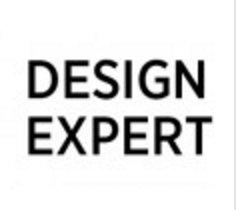By Travis Wood
Last year the VCDX-DTM track was released and Simon Long, Ray Heffer and myself became the first to be certified in this new certification. Since then I have sat on several panels and fielded a lot of questions specific to the desktop certification track, so I wanted to answer some of those frequently asked questions here on how to prepare for this track.
I have a View design, should I submit for VCDX-DCV or VCDX-DTM?
If your design is focused on View and EUC then you will likely be better prepared if you submit for a VCDX-DTM. Whilst you can, and people have in the past, use a View design for DCV, you still need to demonstrate mastery of skills applicable to DCV designs. The criteria for VCDX-DTM is specifically designed to evaluate desktop designs, so this is likely the better option for a View design, and if this is where your core skills are then this will give you better preparation for your defence.
What products are in-scope for VCDX-DTM?
As specified in the VCDX-DTM Blueprint, VCDX-DTM is focused on the VMware Horizon suite to deliver end-user computing solutions. Within this product suite there are a number of products that may be utilized to meet your requirements including Horizon View, Mirage, Identify Manager and vCenter Operations for Horizon. Also vSphere makes up a key component of a desktop virtualization design.
Does the design have to be based on Horizon View?
Whilst the blueprint does not specifically say that Horizon View must be used, it would be extremely difficult if not impossible to cover the required solution areas without it.
Do I need to use ThinApp or AppVolumes?
Application integration is important to a VDI design but may be achieved in different ways depending on your requirements and constraints. These specific products are not required, but you might want to consider how you will demonstrate the application integration that is in your design, and be prepared for questions that may arise in the design or troubleshooting scenarios.
Do I have to use a VMware product for profile management?
Not necessarily – there are many ways to handle profile management and the best solution for your design should be used. But if you do include third-party profile management, do not simply mention it – ensure ALL documentation includes the detail required to design and implement the solution correctly.
Do I need to know about products other than Horizon View?
Even if your design does not use products such as Mirage or AppVolumes, prepare yourself for being presented with business requirements that could be solved using these products – or in other ways. Having a breadth of knowledge of the VMware EUC portfolio will give you greater capability to solve problems presented by the design and troubleshooting scenarios.
Is AirWatch in-scope of VCDX-DTM?
VCDX-DTM is focused on the Horizon Suite, and AirWatch is not a part of Horizon Suite.
Is my design large or complex enough?
There are no specific size or complexity requirements, but the design must be “enterprise-scale.” This is the same requirement that was specified by both DCV and DT; neither size nor complexity at either end of the scale will guarantee success. The panellists are looking for the candidate to demonstrate mastery of the solution areas defined in the blueprint. Choose a design that allows you to do this.
Can I modify my design?
Absolutely! The most valuable advice I got when preparing for my first VCDX is that you can modify your actual design to better demonstrate mastery. This may be adding or removing elements to achieve a better design that will demonstrate your ability to design a solution across all of the solution areas.
Hopefully these answers will help clear up some questions. If you have any further questions please tweet me at @vTravWood.
Travis Wood is a VMware Senior Solutions Architect





